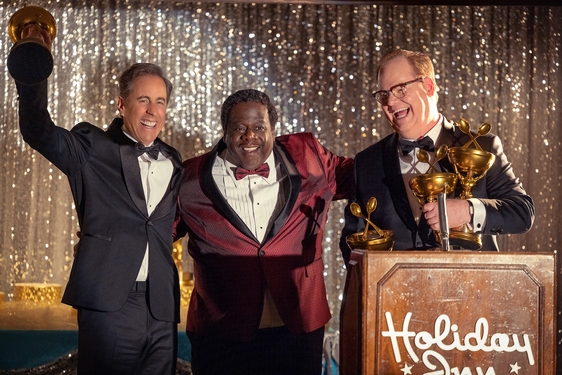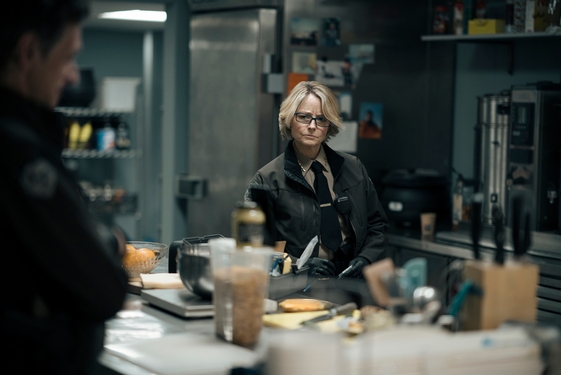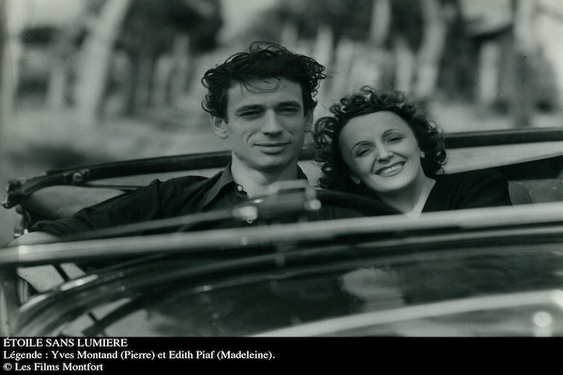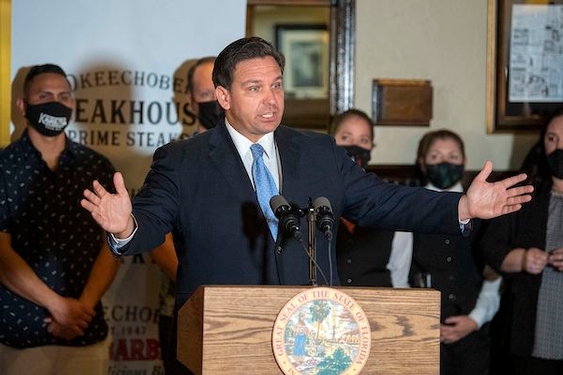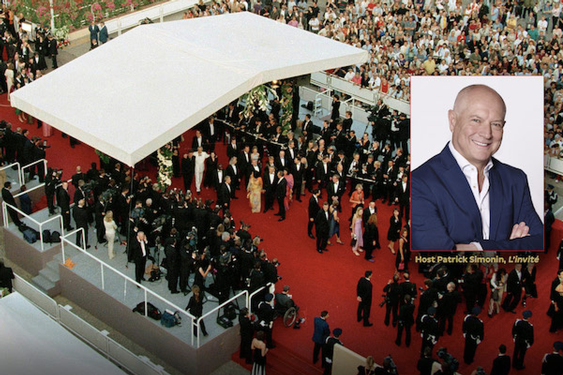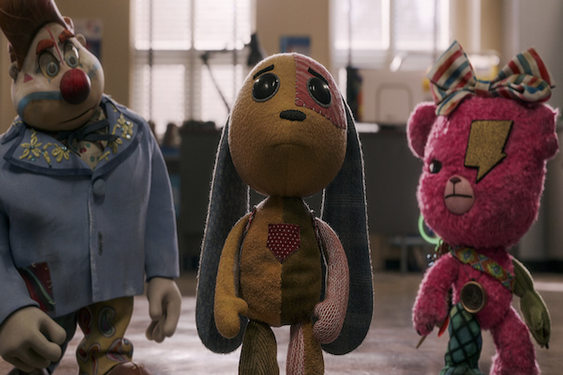There are few television franchises that have celebrated diversity and given voice to the voiceless as consistently and powerfully as “Independent Lens” on PBS. And Monday night, this series is back with another soul-wrenching documentary, “Always in Season,” which uses the death of a North Carolina teen in 2014 to explore the history and legacy of lynching as a tool of terrorism and racial oppression.
The film opens with a warning that some content may not be suitable for all audiences. Far be it from me to suggest what anyone should or should not be able to handle. That’s up to the individual or, in the case of children and teens, their parents or guardians. But I hope as many people as possible will watch this film, which premieres Monday night.
The images of bodies shot, mutilated, hung and burned are graphic. But this part of American history cannot be told accurately, understood intellectually or felt viscerally without the use of such images. And it is especially true given the way many historians, politicians and too much of mainstream media have chosen to ignore, if not deny and bury, this savage and shameful strain of American life.
Furthermore, filmmaker Jacqueline Olive carefully puts the images in context through the use of historical evidence and analysis from such experts as Sherrilyn Ifill, president of the NAACP Legal Defense and Educational Fund. The historical analysis provided by the author of “On the Courthouse Lawn: Confronting the Legacy of Lynching in the 21st Century” would itself justify seeing this film. Without a shred of academic-speak, Ifill offers a short course in the sociology, psychology, history and politics of lynchings.
At the heart of the film is the death of Lennon Lacy, a 17-year-old high school student and football player in Bladenboro, N.C., who was found hanging from a swing set near the home he shared with his mother, Claudia. His death was ruled a suicide, but Claudia Lacy believes her son was lynched.
The film revisits the investigation into the teen’s death as it chronicles his mother’s struggle to find out how her son died. Claudia Lacy’s search for justice is the documentary’s narrative engine.
“Think about it as if it was your son or your daughter,” she says in the film. “If you knew in your heart and your mind that someone took your child’s life. And everything you’ve done that is humanly possible, they’ve taken it and twisted it and turned it. How far would you go to get to the truth? How soon would you let it go?”
That might be enough to power many documentaries. But filmmaker Jacqueline Olive goes for even more ? reaching beyond the specifics of the Lennon case for a meditation on lynching that includes some of its history along with a backstage look at a contemporary reenactment of a 1946 murder in Monroe, Ga.
Trying to pack all that into an 89-minute film could have made for one messy production. But Olive pulls it off with power and grace.
Her success with the history and context part of the film is due in large part to Ifill and the way Olive feeds her insights and analysis into the documentary.
After hearing Lennon’s mother explain why she persists in her quest for the truth of her son’s death, viewers see Pierre Lacy, Lennon’s brother, explaining the pain he felt at seeing the cruel way local authorities dealt with his mother in the wake of his brother’s death.
“She was so hurt, and I couldn’t imagine what was going through her mind when she had to go out there and see him like that,” he said describing his mother seeing the body of her dead son.
“And then, they tell her she don’t know what she’s talking about,” Pierre Lacy continued. “He did this to himself (the authorities said). And you’re going to force feed that lie to my whole entire family and make us think were crazy? Honestly, it looked like it was a display, a message, like it was a back-in-the-day lynching. That’s how it made me feel.”
As the camera slowly pans up the black-and-white, grainy photograph of a young, dead, black man hanging from a tree, viewers hear Ifill’s voice starting to explain the history of lynchings.
“Lynching as a form of racial terrorism is a very particular thing,” she begins. “And that really began after the Civil War during the Reconstruction Period when newly emancipated slaves were making political gains, economic gains and educational gains. Between the 1890s and 1960, there were about 5,000 lynchings in the United States, most of them African American men, though there were a few dozen cases of African American women.”
As she is talking, viewers are shown a stunning array of archival photographs of the bodies of victims and the crowds surrounding them.
“And lynchings very often involved hangings, very often involved shooting, but also burnings, including the burning alive of victims,” Ifill continues. “But it really was the character of the murder that made it a lynching. Those involved in the lynching perceived themselves as having the right to do this. And that’s why it’s most often done openly and notoriously with the participation of average people ? not just to punish the individual people, but as a symbol, a sign to the larger community, both the white community and the black community. Lynching was a message crime.”
While mutilated black bodies are often at the center of the frame, it is impossible not to be struck by the looks on the faces of the white onlookers, especially those who are smiling at the camera.
Ifill goes on to explain how most lynchings took place in public spaces. But even when they happened in more secluded, wooded locations, the bodies were often hung in public squares where they were seen sometimes by thousands of people.
“And it’s the public nature of lynchings that really condemns the white community,” she says. “Because the idea that people didn’t know, they did know. They did know.”
Along with Claudia Lacy’s search for justice and that kind of historical context from Ifill and others, Olive’s chronicle of a reenactment of the murders of four persons in Monroe adds another rich layer of historical meaning to the film.
Seeing and hearing the director and some of the participants talk about, rehearse and then perform their roles in the reenactment of this barbaric incident show how such modern-day productions are in part a way to try to claim or reclaim a history that has been suppressed or mainly told by others.
People participate in historical reenactments for many reasons ? ranging in the film from atonement by some white participants, to an insistence that this part of the past should not be forgotten on the part of some African-American reenactors. Reenactments are about power, identity, memory and the stories we choose to tell or not tell as nation. All of that is on display in this film.
“If you read the accounts of lynchings, the acts themselves are so horrifying that they became a kind of internal story of so many communities,” Ifill says. “And yet like children we still hope and pray that it’s far enough in the past that maybe we never have to talk about it.”
But Ifill and the film make it clear that without such talk there is little chance of understanding or reconciliation.
“Always in Season” is the kind of socially conscious and historically informed documentary that can spark that kind of tough conversation about the nation’s racial past ? a conversation that seems so badly needed today in the midst of landmark demographic change and an old order at the highest levels of government trying to hold onto power.
———
ABOUT THE WRITER
David Zurawik is the Baltimore Sun’s media critic.
———
©2020 The Baltimore Sun
Visit The Baltimore Sun at www.baltimoresun.com
Distributed by Tribune Content Agency, LLC.



